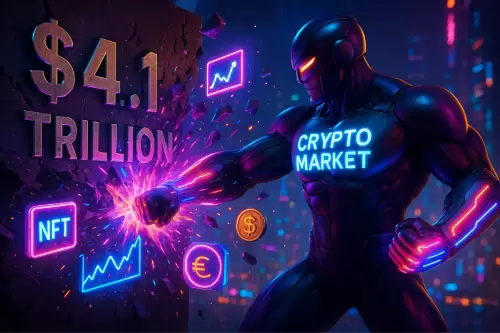Bitcoin's hashrate took a dip, and fingers are pointing everywhere from Iran to Texas. Let's break down what's going on with Bitcoin miners and the recent heatwave.

Bitcoin's hashrate took a summer vacation, and everyone's trying to figure out why. Was it geopolitical drama or just good ol' Texas heat? Let's dive in.
The Hashrate Dip: What's the Deal?
Bitcoin's hashrate, a measure of the computational power securing the network, saw a significant drop, hitting levels not seen since March 2025. This sparked a flurry of theories, from international intrigue to domestic disruptions. The hashrate is a proxy for competition in the industry and mining difficulty. Miners earned an average of $55,300 per EH/s in daily block reward revenue last month, a 7% increase from April. Daily block reward gross profit rose 13% month-on-month to the highest level since January. The total market cap of the 13 U.S.-listed bitcoin miners the bank follows rose 23%, or around $5.3 billion, from the previous month.
Theory #1: Iran's Secret Mining Ops
One spicy theory suggests Iran might be using Bitcoin mining to dodge sanctions. The idea is that US airstrikes could have targeted mining facilities run by Iran's Islamic Revolutionary Guard Corps (IRGC). Some analysts believe Iran not only evades sanctions with Bitcoin but also uses it to fund missile programs.
Theory #2: Texas is Cookin' (and Not in a Good Way)
The other, perhaps more plausible, theory points to extreme weather in the U.S., particularly Texas. Record-high temperatures have strained the ERCOT power grid, forcing miners to scale back operations to prevent blackouts. Data from the U.S. Energy Information Administration (EIA) supports this, showing a surge in electricity use in Texas due to data centers and mining facilities.
DOT Miners: A Different Approach
Amidst all this hashrate hullabaloo, companies like DOT Miners are offering a different way to get in on the crypto action. They're a UK-based cloud mining platform promising stable returns without the need for technical expertise or hefty hardware investments. They use automated computing power allocation, and users only need to use mainstream crypto assets such as USDT, BTC, ETH to purchase contracts, without any technical or hardware investment, to achieve daily income settlement and principal protection.
My Two Satoshis
While geopolitical factors can't be ignored, the heatwave theory seems more grounded. Occam's Razor suggests the simplest explanation is often the right one, and let's face it, Texas summers are brutal. The surge in electricity demand coupled with miners' energy-intensive operations makes a compelling case. It's likely a combination of factors, but the Texas heat definitely plays a starring role.
The Takeaway
Whether it's international intrigue or a good ol' fashioned heatwave, the Bitcoin hashrate dip highlights the various factors that can impact the crypto world. Keeping an eye on both global events and domestic conditions is key for anyone involved in Bitcoin mining.
So, next time you're sweating through a heatwave, remember the Bitcoin miners in Texas are feeling the burn too. Stay cool, crypto fam!














































































